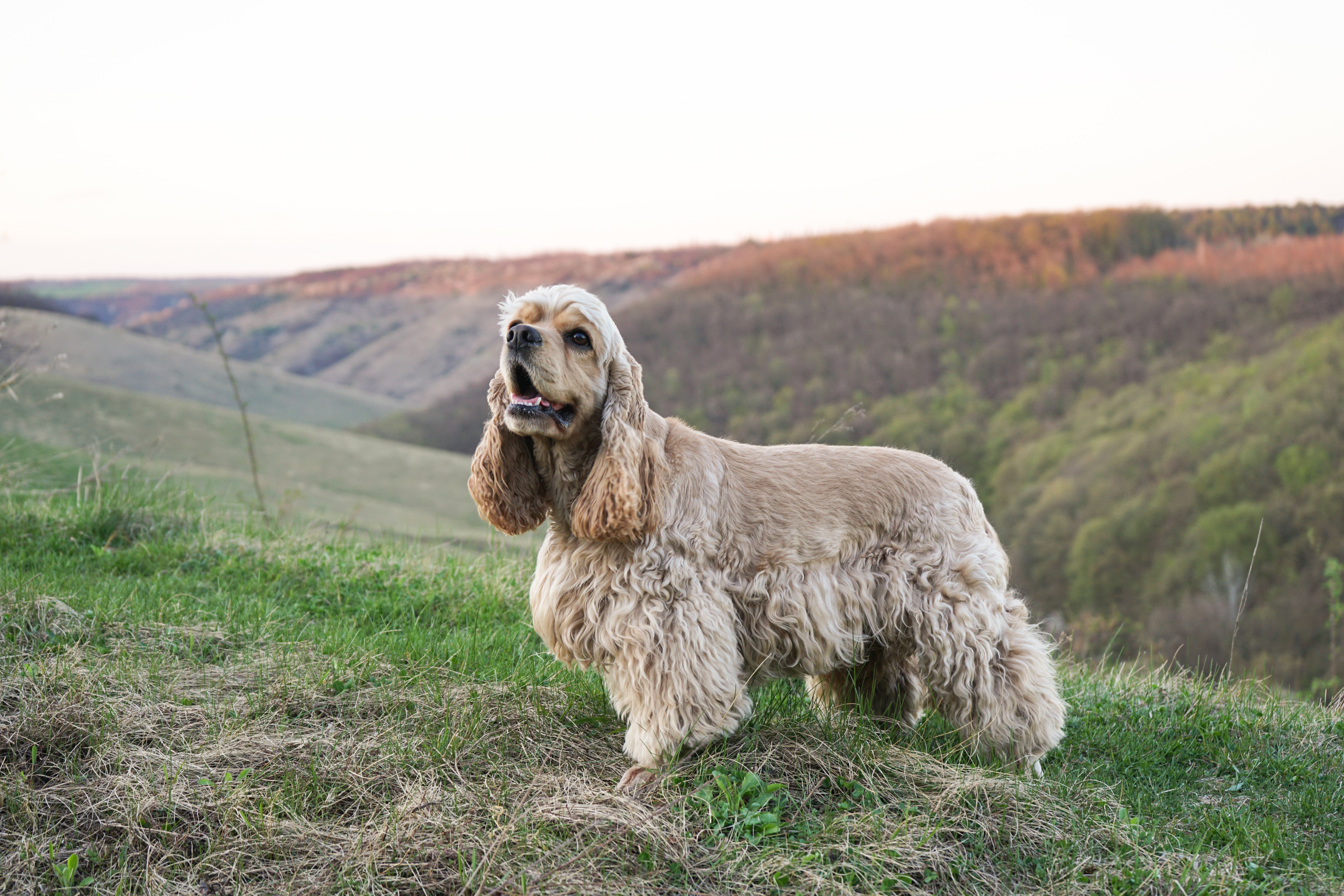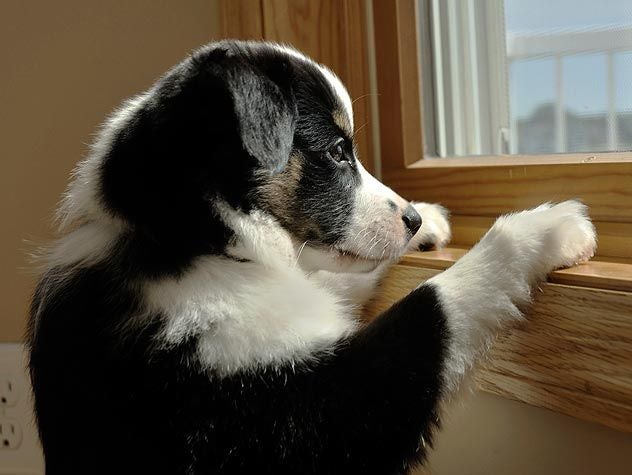Breed characteristics carousel
Learn More
Need to Know
- Dog suitable for owners with some experience
- Extra training required
- Potential health issues
- Enjoys vigorous walks
- Medium dog
- Some drool
- Requires frequent grooming
- Chatty and vocal dog
- Barks and alerts to visitors/anything unusual
- Generally friendly with other dogs
- Gets along with other pets with training
- May need additional supervision to live with children
- Needs a small yard, either in suburban or rural areas
- Can be left alone occasionally with training
- AKC Registered Breed

Personality
Naturally peaceful and patient, Field Spaniels have a sunny disposition and are charming dogs. They’ve been called “unusually docile,” or at least calmer in relation to their cousins the Cocker Spaniel, Sussex Spaniel, and Springer Spaniel. Fielders develop strong bonds with their families and learn quickly, with the occasional stubborn streak.
Field Spaniels originated in England, where they enjoyed show dog popularity in the late 1800s and early 1900s, with a big focus on their unique feathered fur and kind spirits. They arrived stateside toward the end of the 19th century. They are more rare than related breeds.
Field Spaniels love the great outdoors and would appreciate an owner who’d enjoy going on regular walks together. Since they have such calm natures, they do best in consistently low-key environments. They can be willful, so owners who can train them with a good dose of humor and patience are ideal fits.
Despite their mellow demeanor, Field Spaniels have a lot of energy best burned off by routine exercise, including mental stimulation. These dogs are thrilled if they get daily playtime in a secure space and regular bouts of games like fetch with their beloved person.
Field Spaniels can adapt to smaller living quarters like apartments, but they are happiest in homes with access to a fenced greenspace where they can run and play often.
To avoid tangles and matting, Field Spaniels require regular brushing. They need less bathing than some other dogs to keep their coats from drying out.
Smart people-pleasers, the Field Spaniel breed is easier to train than others related to them. They benefit from early exposure and socialization in a variety of environments as well as smaller children and animals. With patience, positive reinforcement, and consistency, Field Spaniels can be very well-trained.
Ideal for many families, these laid-back dogs are usually very patient with children and adore playing with them. Field Spaniels are also typically harmonious with other pets. They do best with older kids who can participate in their exercise and training.
The cost of a Field Spaniel from a breeder is significantly more than the cost of adopting one from a local shelter or rescue. The adoption fee usually covers additional items such as spaying or neutering, vaccines, and microchipping.

Learn more about feeding and caring for your Field Spaniel on Purina.
Did You Know?
- Fielders thrive using their big brains and love mental stimulation like puzzle games.
- The Field Spaniel is known for being a level-headed and calm Spaniel breed.

